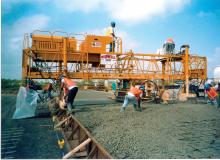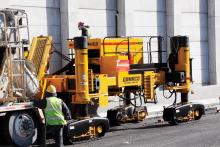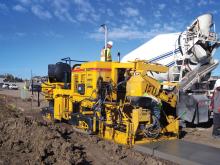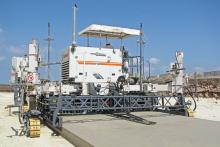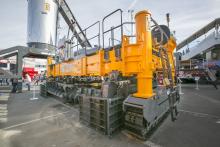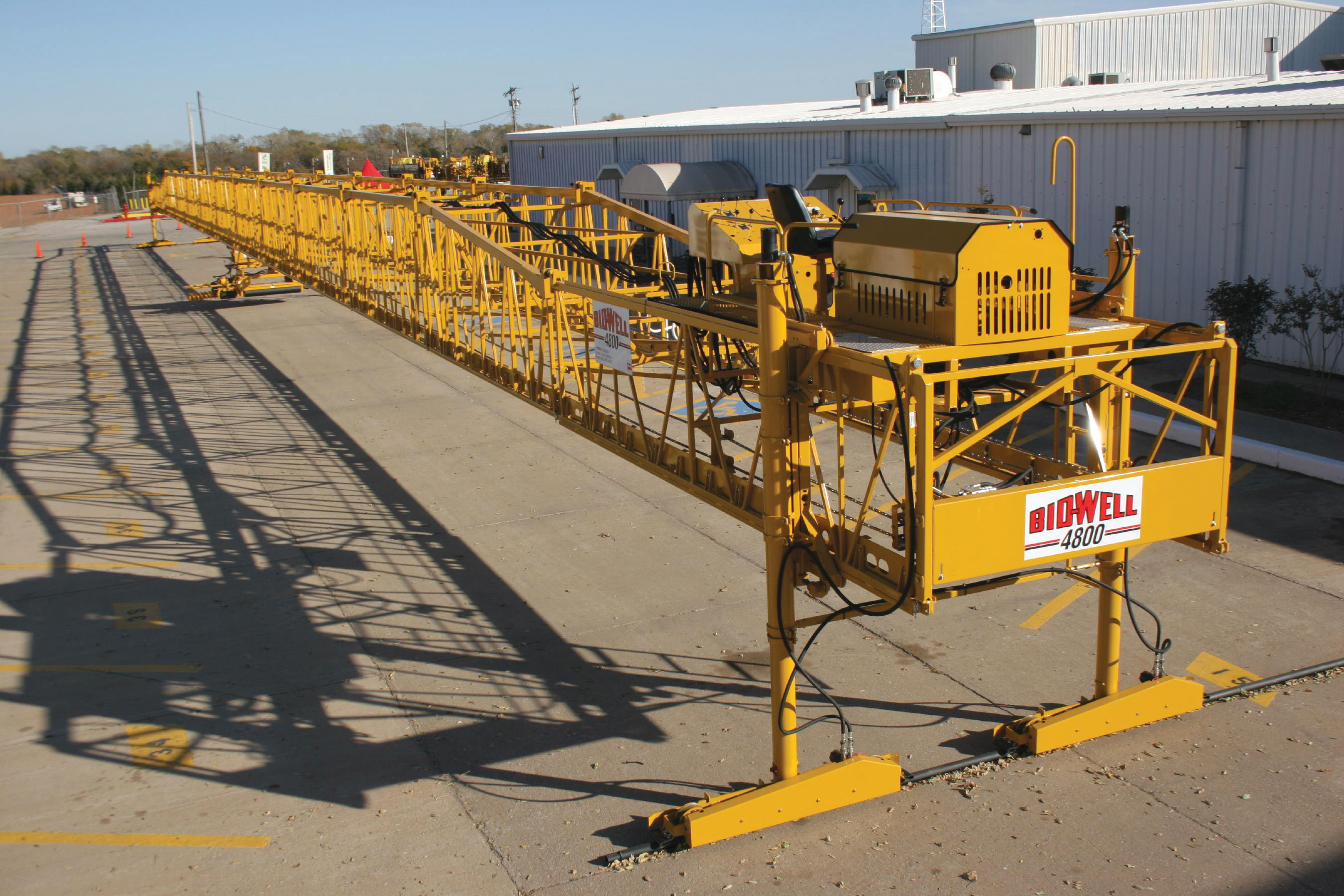
Concrete highway construction techniques and technology continues to evolve. Mike Woof reports
The recent increases in oil costs are having a knock-on effect for the road construction sector, as asphalt prices have increased noticeably and faster than those for concrete. This has spurred renewed discussion over which construction technique now offers the best long term solution for road building.The debate between those in favour of concrete and those preferring asphalt for highway construction has been ongoing for many years and this discussion is not likely to die down any time soon. The issues of ride quality, skid resistance (particularly in the wet) and road noise are also hot topics in the debate between the choice of asphalt or concrete for road construction.
However it is worth noting that with the greater increases in asphalt prices than for concrete, the concrete lobby has benefited. Whether this will result in a greater percentage of concrete roads being constructed remains to be seen but some highway agencies have commented that they will give concrete road construction a higher priority than before.
Concrete highway construction technology continues to improve however, as the major manufacturers refine their equipment offerings and develop new solutions.
The year has already seen some notable product introductions, with
GOMACO is extending the versatility of its four-track Commander III by making its roller frame design a standard feature. This is said to allow easy and accurate width changes as the machine's frame hydraulically telescopes on the left side for up to 1.83m. The dual rollers, mounted to the top and bottom of the outer frame tubes, position the inner tube and reduce the amount of surface to surface contact area. The system reduces friction and drag, as the inner tube rolls when telescoping and was originally developed for the Commander III with the V2 dual mold system, which is hydraulically adjustable for paving at different widths. The roller frame is designed to provide a fluid action as the V2 mold is making on-the-go width changes for tapered slabs. However the system is now standard on all GOMACO Commander III four-track machines and can also be retrofitted in the field on existing Commander IIIs.
Versatility for the company's compact GT-3200 kerb and gutter paver has been increased due to modifications that allow it to pour from either the right or left side. Key features include a front track that can be mounted to a flange on the front of the machine for a left-side pour, or mounted to a flange on the back of the machine for a right-side pour, effectively turning it through 180º.
The upgraded G22 digital control system offers a string of improvements over the G21 controller it replaces. The new unit provides more precise control of concrete slipforming duties as it can be connected to the latest stringless technology/3D and also comes with advanced diagnostics for troubleshooting.
For really large width concrete paving contracts,
This innovative machine features a newly redesigned truss system and is claimed to be 20% wider than the practical listed maximum paving width of competitive machines. It uses a radical new machine design as during its development, the firm's engineers discovered that using conventional steel added too much weight and was not rigid enough to prevent deflection. "We needed steel that increased the structure's rigidity while keeping weight the same," explained Daryl Hardy, engineering manager at Bid-Well.
To cope with paving work wider than 45.7m, the new Bid-Well 4800 frame is made from high-strength steel claimed to be almost 120% stronger than the conventional steel used in other Bid-Well pavers. This steel weighs slightly less than conventional steel and has allowed the firm's engineers to configure the 4800 paver in a variety of widths, exceeding 61m if necessary.
The latest in finite element analysis was used by the engineers to ensure the new 4800 automatic roller paver reliably delivers the finish quality customers have come to expect from Bid-Well. The truss frame transitions from a 1219mm depth at the legs to a rigid 1676.4mm depth in the centre. Heavy-duty gussets connect the truss sections and are also made of the same proprietary ultrahigh-strength steel, while larger 38.1mm crown bolts are now used in the connections. Together the gussets and bolts help to prevent truss deflection, even at extremely wide paving widths, to ensure a smooth surface.
In addition this machine features the firm's novel Rota-Vibe system, which delivers up to 5,000 vpm (83.3 Hz) over the vibrating rollers' length to reconsolidate the top 50.8mm of concrete, delivering a denser and more uniformly consolidated concrete surface. To help keep this paving carriage assembly moving freely along the frame, the drive is now supported by a dual-chain hanger system. This prevents the chain from sagging and reduces the load on the drive mechanism and sprockets for increased service life. The dual hanger also offers easier chain installation in the field.
With the bulk of the machine's weight riding the rails, the 4800 also features a stronger leg design and mounting system. Larger lift screws and heavier thrust bearings, mounting plate and coupler motor all work in concert to ensure more reliable operation. The legs are now attached to the truss with larger stripper bolts, leg rollers and machined angle iron, offering a precision fit.
When paving superelevations in excess of 10%, contractors can equip the 4800 with a pivot leg option. This feature enables the machine's legs to be pivoted to a true vertical position, reducing pressure on the rails and side forms. The redesigned pivot legs on the 4800 now include stronger 50.8mm pivot pins and a new screw angle adjustor, which offers instant position changes that hold the legs in place.
Meanwhile
Standard features include a finishing beam and super smoother while an innovative dowel bar inserter, side tie bar inserter and longitudinal joint bar inserter are available as options. Other features include ease of maintenance and high productivity.
New SF-2700 concrete paver meets Bayview needs
A Canadian contractor specialising in road building, Bayview Construction, says that its new SF-2700 concrete paver meets the needs of its market. The Winnipeg, Manitoba-based company was keen to buy a straightforward concrete slipformer for conventional road construction work and says that the
The SF-2700's first job has been to pave the Bishop Grandin Boulevard in Winnipeg, a busy route carrying some 60,000-80,000 cars/day. The machine's versatility has been important as Bayview has had to use the SF-2700 for five major pours that vary in width. The first pour was for a stretch of 700m by 3.75m wide slab, to a thickness of 230mm and was slipformed in 7 hours. According to the firm, productivity was good and the machine averaged 78m³ of concrete/hr.
Several features of the SF-2700 have impressed Bayview and the other five main road building contractors as well as highway engineers in the province who have seen the unit operating on the project, according to Motkaluk. The narrow offset pan to the track is one of these key features and the SF-2700 requires minimal side clearance, allowing the machine to operate in tighter spaces than some other units. This is important as a reduced operating clearance is required for passing obstacles and more importantly, for live traffic in adjoining lanes. Motkaluk added that help from Power Pavers in setting up the machine initially and service back-up has been extremely useful

